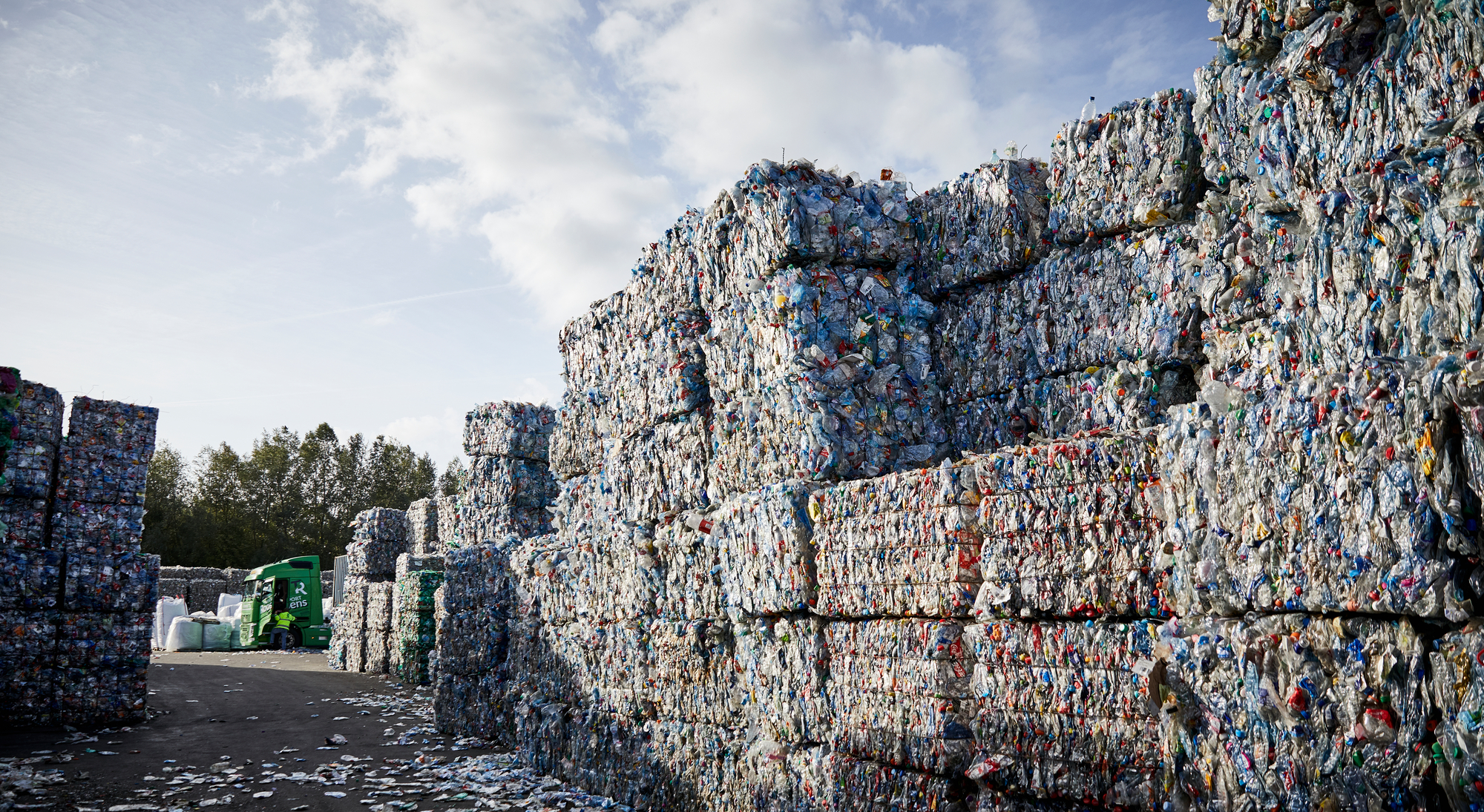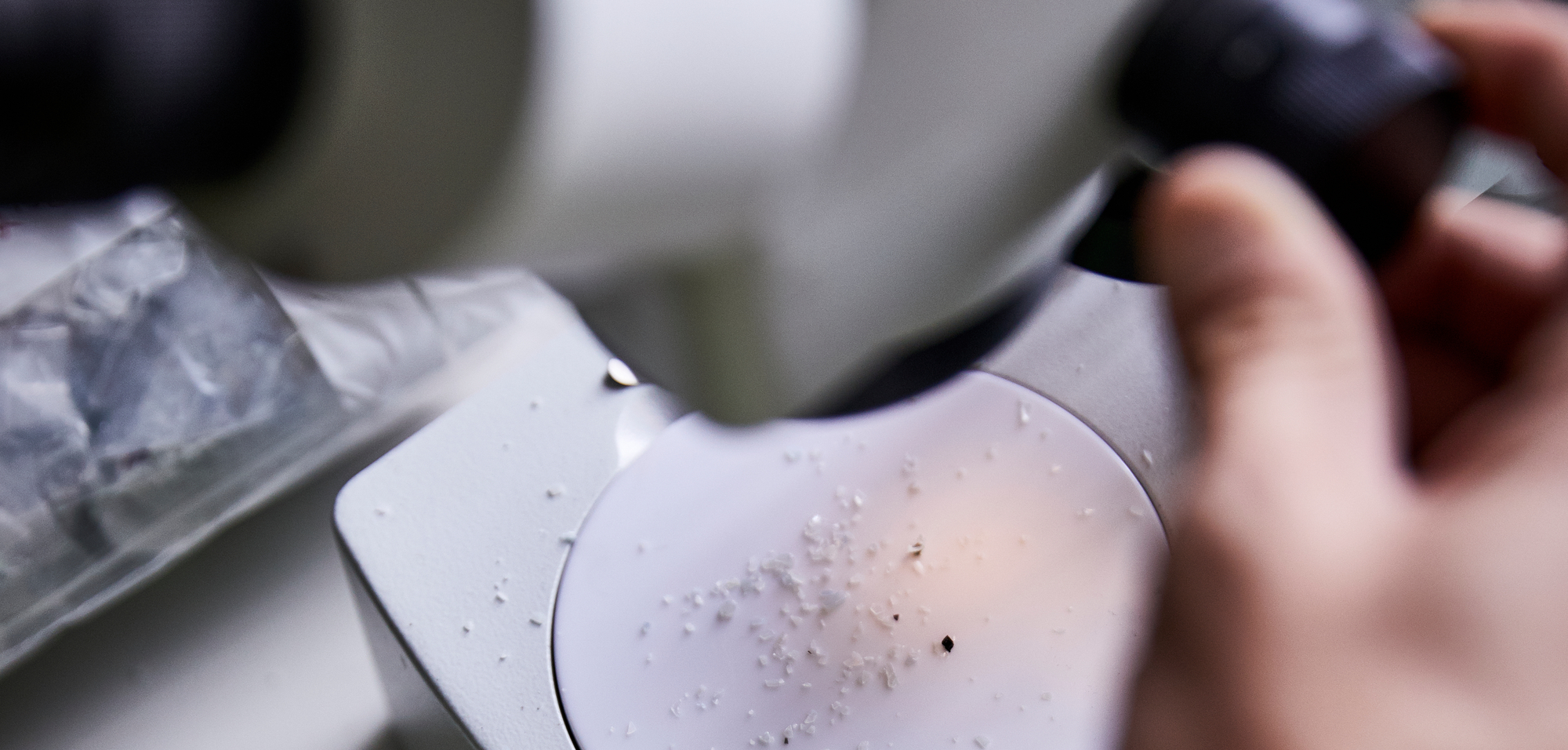
Again & again & again
Chances are that some of the ingredients for the office lunch or your dinner tonight was packed in plastic. And while that is good news for the food’s shelf life, we all know that plastic is bad news for the planet, right? Plastic waste is a huge problem, but what if we could make that waste into perfectly good packaging again?
In 1907, a Belgian chemist by the name of Leo Baekeland combined the two chemicals formaldehyde and phenyl together under heat and pressure. The result was a robust and resilient material fit for mass production, and thus the first synthetic plastic was born and dubbed Bakelite after its inventor.
The all-purpose utility of plastic proved to be a success beyond measure, and during the 20th century new methods for developing synthetic plastics were discovered and made new uses for the material possible. It allowed massive advancements in almost every facet of life, from the production of medical instruments and rockets for space travel to storing clear drinking water and extending the shelf-life of food. In fact, modern life would not look the same without plastic.
But we all know that’s not the end of the story, and today’s extensive plastic production and subsequent waste present serious problems for the environment both in terms of CO2 emissions and plastic pollution. And these problems need solutions.
Plastics and food packaging
In 2019, more than eight million tonnes of the total plastic demand in Europe were used for food and drink packaging. That is roughly equivalent to the weight of 8 million cars. And while plastic packaging for food and drink only accounts for 16% of the plastic demand, packaging is responsible for 59% of all plastic waste in Europe.[1]And the main reason for this is simply because of the nature of packaging – you use it once to protect a consumer good, and when that is no longer needed, you throw it away. This is why most plastic packaging is also often referred to as single-use plastics.
The central problem with single-use plastics such as wrappers, plastic bottles, and other food packaging is that they can have very short lifespans before they are discarded. In fact, the average lifespan of a food tray – used for ready meals or meat sold in supermarkets – can be as little as eight days, from production until disposal by the consumer[2]after which it often ends up in landfills or incinerated, emitting CO2 into the atmosphere or polluting nature. In the best case, it is downcycled into lower quality plastic.
So why don’t we just use something other than plastic for keeping our food fresh instead? Well, there are actually a few reasons.
Alternative materials such as glass or paper packaging are often praised for being more easily recyclable, but materials like that often comes with caveats. They are insufficient for many types of food packaging due to either weight in the case of glass or the need for coatings which impact recyclability in the case of paper. And limitations like weight or coatings often impact the CO2 emissions or recyclability of the material significantly. In fact, a change from plastic packaging into other materials would increase the emissions when it comes to many types of food packaging.[3]
Food waste is also a problem that plastic helps alleviate. Plastic does a very good job of keeping food products fresh and safe, making it possible to transport goods and stock the shelves of supermarkets for longer periods of time. And that is important, as 6% of global greenhouse gas emissions comes from food loss and waste.[4]To put that into perspective, that is three times the global emissions from aviation, or if food waste was a country, it would be the world’s third biggest emitter of greenhouse gasses right behind the US and China.
In the end, the utility of plastic is unmatched by other materials. But that still leaves the current problem of plastic waste and the emissions caused by the use of virgin plastics. So how do we make plastic even better?
Closing the loop
We already have solutions to a lot of these problems; we just need to scale up. And a big part of how we get rid of the plastic waste from food packaging lies in an already well-known concept: recycling. The key is to change the spiral of downcycling into a closed loop.
We know the technology from PET bottles from different soft drinks that can be recycled back into new PET bottles. But food containers have been more of a challenge, as their recycling requires machines to be carefully calibrated to sort and completely clean the waste to ensure the high standards required to be used with food products.
First of its kind, the Cirrec recycling plant in the Netherlands has cracked the code to recycling food packaging and uses it to produce new food containers at the same quality as before.
“We are turning waste back into valuable resources. This means closing the loop for food tray PET and being completely circular,” says Aron Damen, Director of Recycling at the Danish plastics company Faerch which owns the Cirrec recycling plant.

By mechanically sorting plastic waste for PET, wash it, and cut it up, Cirrec is able to make food-grade quality plastic pellets ready to be remoulded into new packaging. The key is in the washing which ensures that no harmful elements are retained in the materials. And the technology only gets more effective with the implementation of more PET into the market which is why Faerch promotes the use of mono-material PET as a standard.
The technology has been proven over the past five years, and the next step is to facilitate industrial scale collection and sorting of PET tray waste, which means working with national and regional authorities and sorting centres and encouraging people to sort their waste correctly. While the sorting infrastructure across Europe is gradually improving, Faerch has taken matters into their own hands to mitigate shortcomings, offering special customer programmes to keep PET in the loop.
The potential as well as advantages are huge. PET is used all over the world, and apart from the obvious plus point of preventing plastic waste from polluting in landfills, oceans, and even our atmosphere, the CO2 footprint of recycled PET is about 70-80% smaller than for virgin material.[5]
“It’s about decoupling financial growth from the depletion of resources. This is circularity,” Damen says. “Our vision is that your dinner tray will end up back in a recycling plant again and again and again.”
Recycling alone will not solve the climate crisis, and the Cirrec plant is just a single step. But it is a step in the right direction, and it is a clear example of how circular models of consumption are essential for the future – and for us right now.
About Faerch
Faerch Group is the pan-European leader and sustainability innovator in the rigid plastic food packaging market, and the company was one of the first to introduce post-consumer recycled content (PCR) in its food packaging. Faerch is vertically integrated with its own recycling facility, Cirrec, which is one of the world’s most advanced PET recycling facilities for post-consumer PET with a proven circular food packaging solution using mechanical recycling. Faerch is part of the A.P. Moller Group. Learn more at faerch.com.
[1] Source: ING Bank N.V.
[2] Source: Faerch
[3] Source: ING Bank N.V.
[4] Source: Our World in Data
[5] Source: Packaging Europe